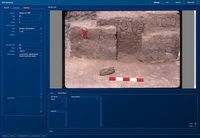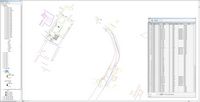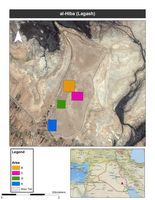Publication
Digitization and Database
Upon the death of Dr. Donald P. Hansen in 2007, Dr. Holly Pittman moved the physical archive of the Al-Hiba Expedition to the University of Pennsylvania Museum of Archaeology and Anthropology. At this time, she initiated a project to create a fully digital archive of the excavation materials and to develop digital tools for the analysis and final publication of the expedition’s discoveries.
The physical archive consists of the records of six seasons of excavation. Paper records, including field notebooks, object records, pottery typology and daily sheets, architectural plans, sketches, and other miscellanea, form the core of the collection. In addition to scanning these assets, they were transcribed into digital form so that they could be searched during the analysis. Further, more than 15,000 negatives and slides were scanned and cataloged. Dr. Gabriel Pizzorno, Henry Bernberg, and Anne Bomalaski oversaw the scanning and scrubbing activities, which took 2.5 years.
Concurrent with the scanning activities, Dr. Pizzorno built a relational Filemaker database to structure the use of the digital records. This serves as the tool through which the publication project conducts its analysis of the pottery, small finds, architecture, and stratigraphy. Dr. Pizzorno and Mr. Bernberg also created a GIS version of the site plan and the excavated remains. In 2014, Reed Goodman took over responsibility for the development and maintenance of the database and the GIS mapping activities.
Sequence of Publication
The first priority of the project is the final publication of the Area G excavations. This region was chosen because it is the earliest remains from the site and the excavations were more limited than elsewhere. The next two volumes will be on the material from Area A and Area B, which forms the basis for Darren Ashby’s dissertation. Area C will be the final task of the project.
Alongside the stratigraphic reconstruction of the areas, Steve Renette has undertaken a complete analysis of all of the pottery excavated at Tell al-Hiba. In the field, Dr. Edward E. Ochsenschlager served as the project ceramicist. Over the course of the excavations, he built a ceramic typology of more than 300 types and worked through more than 3,000 pottery records sheets from excavated contexts. Renette has refined the typology to around 160 types and supervised the input of all of the daily sheets into the project database. For publication, the pottery from Tell al-Hiba will appear in a separate volume. Both the Area G and pottery volumes are expected to be complete in Spring 2017.



